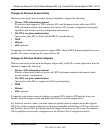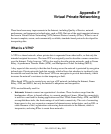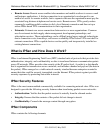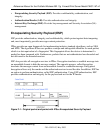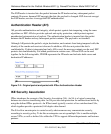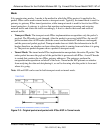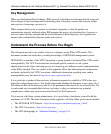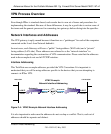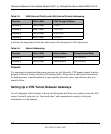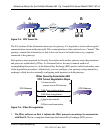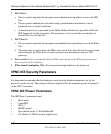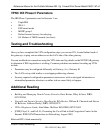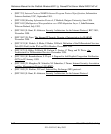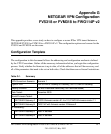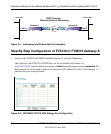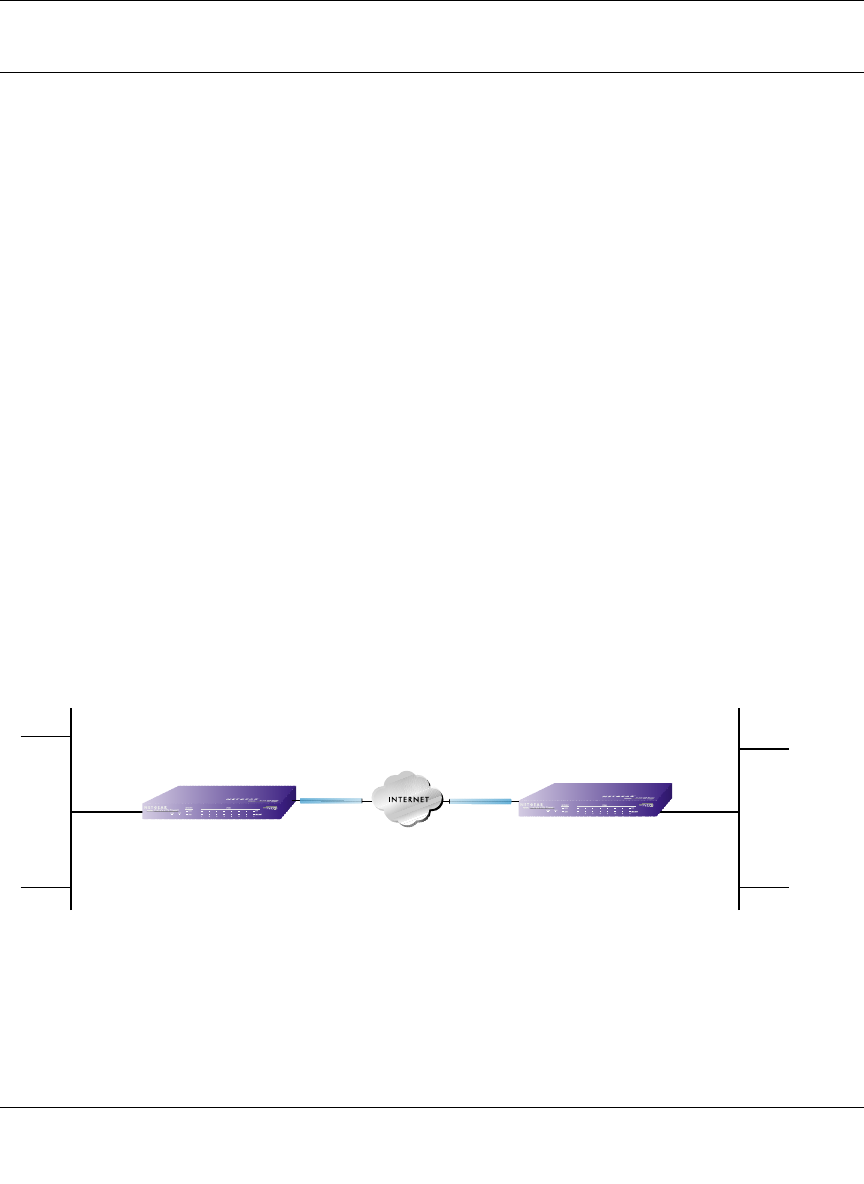
Reference Manual for the ProSafe Wireless 802.11g Firewall/Print Server Model FWG114P v2
Virtual Private Networking F-7
201-10301-02, May 2005
VPN Process Overview
Even though IPSec is standards-based, each vendor has its own set of terms and procedures for
implementing the standard. Because of these differences, it may be a good idea to review some of
the terms and the generic processes for connecting two gateways before diving into the specifics.
Network Interfaces and Addresses
The VPN gateway is aptly named because it functions as a “gatekeeper” for each of the computers
connected on the Local Area Network behind it.
In most cases, each Gateway will have a “public” facing address (WAN side) and a “private”
facing address (LAN side). These addresses are referred to as the “network interface” in
documentation regarding the construction of VPN communication. Please note that the addresses
used in the example do not use full TCP/IP notation.
Interface Addressing
This TechNote uses example addresses provided the VPN Consortium. It is important to
understand that you will be using addresses specific to the devices that you are attempting to
connect via IPSec VPN.
Figure F-4: VPNC Example Network Interface Addressing
It is also important to make sure the addresses do not overlap or conflict. That is, each set of
addresses should be separate and distinct.
Gateway A
22.23.24.25
14.15.16.17
10.5.6.0/24 172.23.9.0/24
172.23.9.110.5.6.1
WAN IP
WAN IP
LAN IPLAN IP
Gateway B
VPNC Example
Network Interface Addressing



